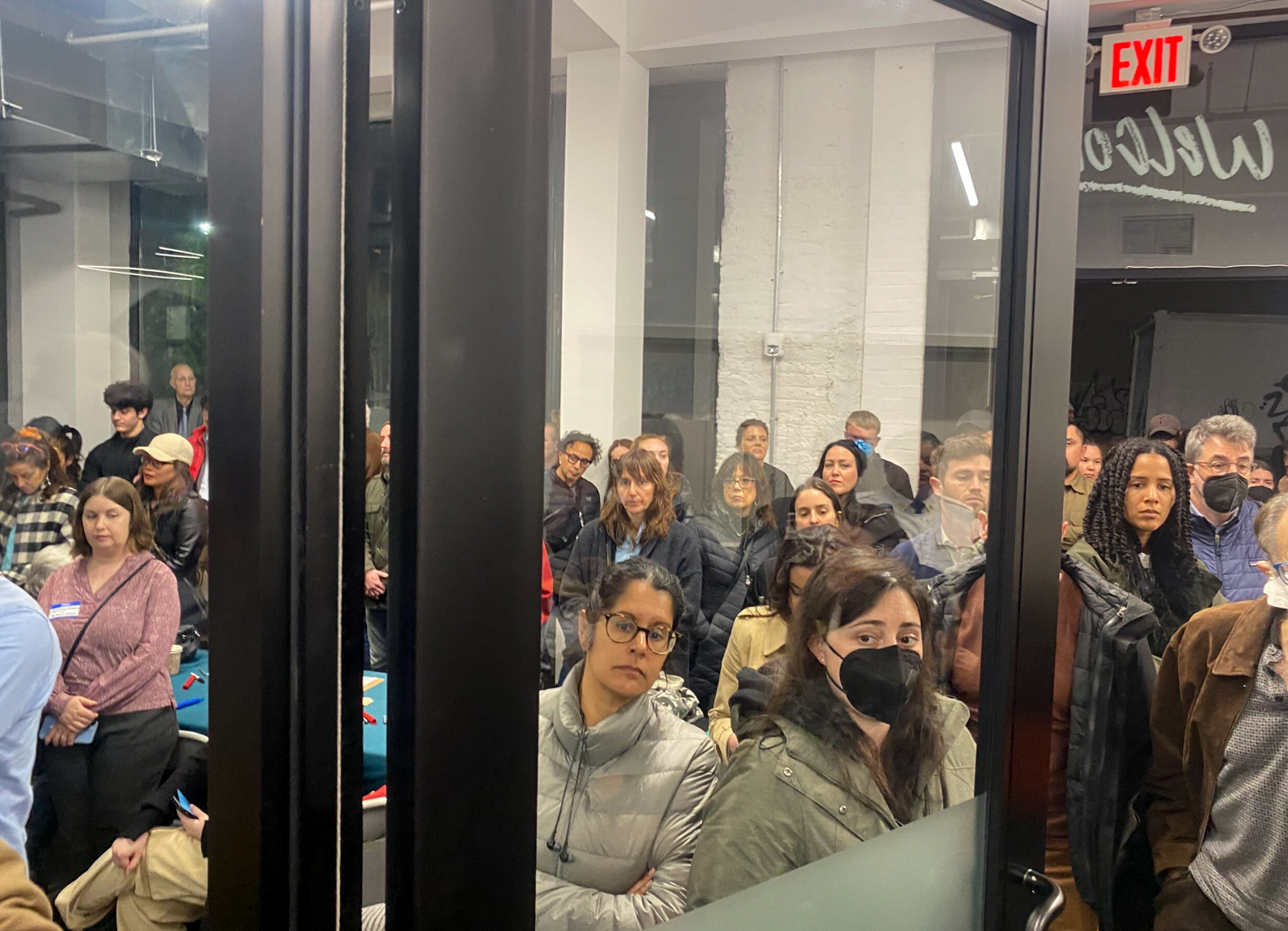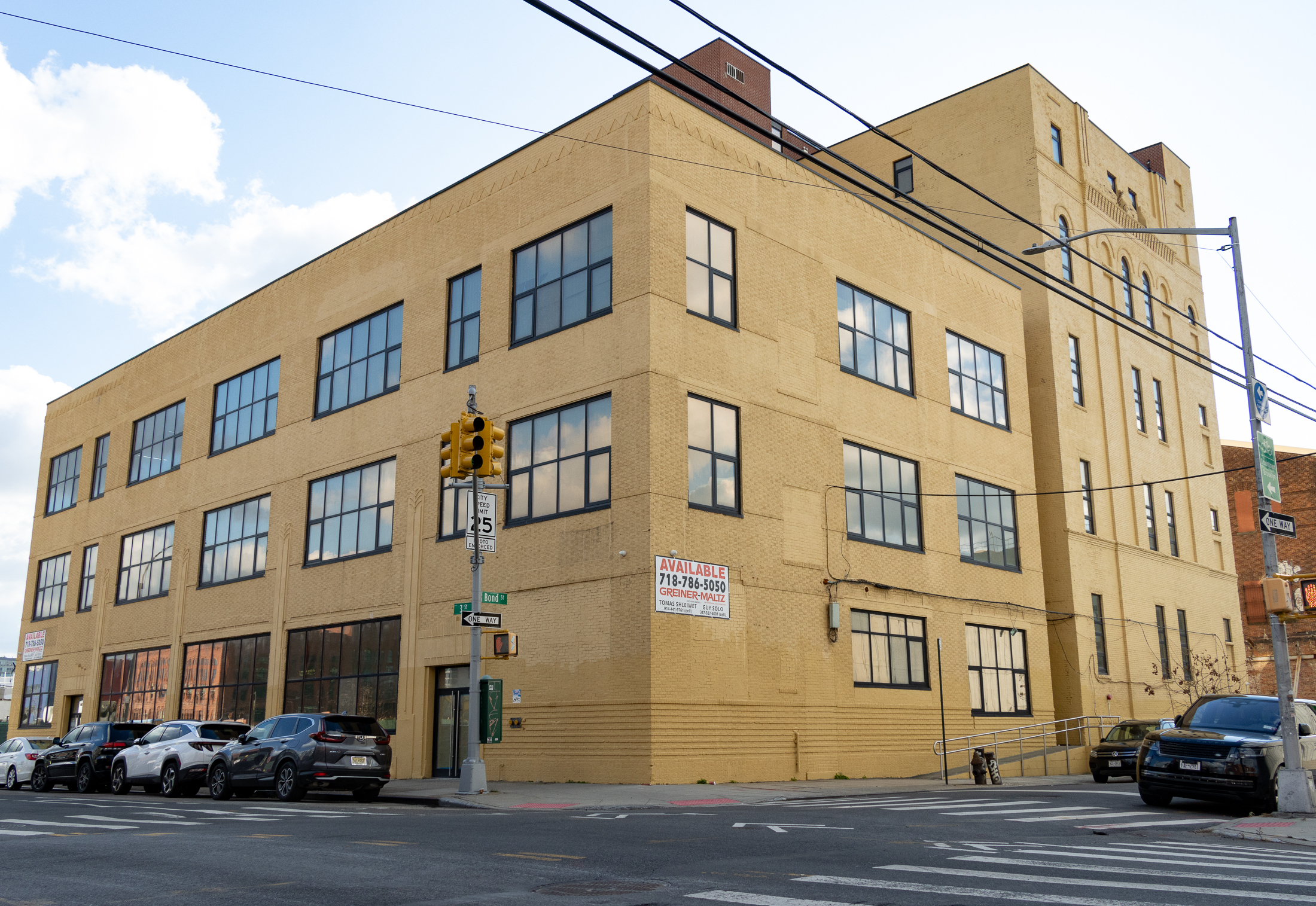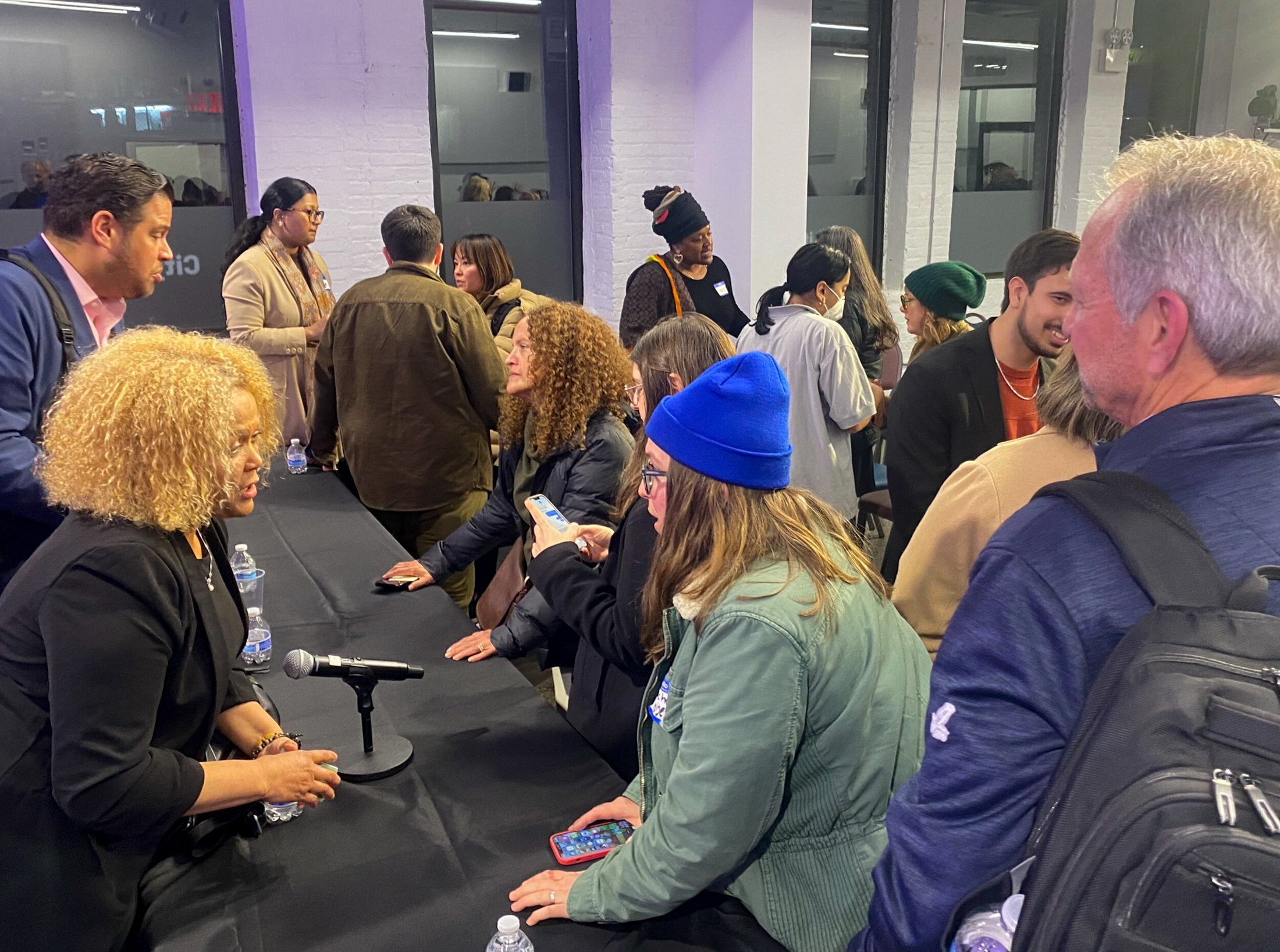Overflow Crowd Packs Gowanus Church for Rowdy Meeting Over Migrant Shelter
Gowanus locals aired their concerns about a migrant shelter for 400 men slated to open in a former factory building on 3rd Street.

A meeting held for a planned migrant shelter in Gowanus was held at City Life Church. Photo by Anna Bradley-Smith
Spaced elbow to elbow in Hoyt Street’s City Life Church Monday night, Gowanus locals aired their concerns at a community meeting on a migrant shelter for 400 men slated to open in a former factory building on 3rd Street.
A vocal group dominated the meeting, heckling speakers and yelling snipes such as “close the borders,” “nobody wants shelters,” “they’re illegals,” and “what’s your address, they can stay with you,” while reps from service provider BHRAGS Home Care, the city’s Department of Homeless Services, the Department of Social Services, and Council Member Shahana Hanif shed some light on the status of the shelter and how it will operate.
Hanif, who facilitated the hour and a half long session, touched off heckling at the top of the meeting when she said many of the city’s new arrivals were “escaping slavery, conscription, and economic destitution.” “Come on,” multiple people called out. Hanif responded saying attendees would be asked to leave if they lacked respect.
She went on to explain that like the community, she was blindsided by news (which Brownstoner broke in December) that the shelter was set to open at 130 3rd Street, likely in April pending an environmental review, and said she had no say in the location, number of beds, or much else to do with the shelter given the city’s emergency contracts rules. Hanif said while she has been “super critical” of the mayor’s strategy to deal with the new arrivals and doesn’t believe the 400-bed model is humane, she supported shelters and would “not be in that business” of preventing them from opening in the neighborhood. Gowanus, she said, has to do its part to cater to the influx of people seeking shelter.

Last week, Gowanus’ Third Street Block Association sued the city’s Housing Preservation and Development, Department of Buildings, BHRAGS, and the building landlord 130 Third Street Owner LLC (backed by controversial landlord David Levitan), claiming violations of the city’s zoning, administrative, and environmental review rules in the shelter’s approval. The suit seeks a revocation of permit approvals, plus costs and fees to the plaintiffs.
While the lawsuit alleges the main issue with the shelter’s approval are possible health risks for residents given Gowanus’ toxic legacy and the fact the site hasn’t been cleared for residential use, those issues barely came up at the meeting. Neither did questions about Levitan.
What dominated locals’ comments was whether they would still be safe with their new neighbors, who would have a 30-day limit in the shelter, and what security would be like on site. (The answer: 10 security guards and a security supervisor for every shift, plus metal detectors and a wand, if the current budget is approved, a BHRAGS rep said.) When a young girl stepped up to the microphone and asked if she would “still be safe playing outside,” she was met by whooping applause and “now, lie to her.” Hanif assured her she would “absolutely be safe.”

Eric Weingartner, a 3rd Street local who used to head The Door and has worked in homeless services, was the sole speaker to bring up environmental concerns, briefly mentioning the site raised “environmental red flags.” He said while he supports the city’s right to shelter, he thinks the proposal at hand is reckless, calling it a powder keg, and accused the city of knowing that and moving forward regardless.
He said an RFP should have been held to find an appropriate service provider, saying BHRAGS doesn’t have the experience doing the work needed for a vulnerable population. He added the shelter would “cram over 400 vulnerable humans into a box with no humanity.”
“This density model has proven catastrophic for decades.”

Transparency around how the shelter and contracts were approved came up multiple times as did staffing levels, the number of beds, smoking, bike parking, and loitering. “I was told that if any member of your community comes in smelling of alcohol or intoxicated they’re not allowed in, is that accurate?” one woman asked (she was assured the residents would be allowed in). Other concerns included media reports of fight clubs and gangs started out of migrant shelters in the city. “They’re not asylum seekers, they’re illegals,” one speaker said.
Yolanda Fuksman, BHRAGS Vice President of Shelter Operations, said the shelter will have 24 hour a day security and residents will have an 11 p.m. curfew. Residents will be given three meals a day on site and be offered education, healthcare, and employment services, she said. She said she is confident BHRAGS staff has the experience to manage the shelter, which will be done “transparently” and “in partnership with the community.”
Weaved through the vocal rejection of the plans, there was also some support amongst community members. One speaker, who said she runs a legal clinic helping migrants with temporary protected status and work-permit applications, said she has “gotten to know quite a few of these bogeymen that everybody’s afraid of.”
“Most of the people I’ve talked to are fleeing gang rape, crossing the Darién in flip flops and shorts,” she said, adding they had followed the U.S. government’s rules regarding seeking asylum and suffered additional traumas getting here and setting up their lives. She said many of the people she has spoken to were super traumatized and she wants assurance that BHRAGS and the city will provide mental health care. “These are the bogeymen that the children are afraid of because their parents are putting them up to testify here.”
Another woman was told to “go back to Sicily” after she said her great grandfather had immigrated from there via Ellis Island, and she hoped she is making him proud by supporting newcomers. “I am honored to be among folks in this community that are supporting our new arrivals,” she said.
DSS Chief Strategy Officer Chris Gonzalez told the crowd the emergency shelter policy was set up two years ago to respond to the thousands of migrants being bussed to the city, an influx the regular system could not manage. “We’re literally building the plane as we’re going down the runway,” he said.
Over the past two years, as New York has welcomed more than 170,000 migrants, 217 emergency shelters have been set up across the city. “We’re responding to a crisis,” he said, adding it is the agency’s mission to respond and create the services and space for those in need. He said the 3rd Street shelter won’t open until it has all the appropriate approvals from city agencies and the state’s Department of Environmental Conservation.
Nonetheless, the “emergency shelter” process has been in place for over a decade, long before the current migrant crisis. What is new is the suspension of city oversight of contracts under Mayor Adams, which was ended by NYC Comptroller Brad Lander in December. In 2012, a homeless shelter for 170 men slated for 165 West 9th Street in Carroll Gardens, a few blocks from 130 3rd Street, was opposed by locals on similar grounds, although back then the shouts and boos at an unruly community meeting did not insult or demonize the future occupants.
Hanif told those gathered that the current situation calls for a facility such as the one one planned.
“We will make the best of it, and I hope that the neighbors here can step up. I’m sorry that we cannot do better right now. That’s where we’re at.”
[Photos by Anna Bradley-Smith unless noted otherwise]
Related Stories
- Former Gowanus Brewery, Clinton Hill Warehouse Slated to Become Migrant Shelters
- Brooklyn’s Hall Street Migrant Shelter Grows to 3,000, Testing Neighbors in Clinton Hill
- Almost Half the Families Who Got 60-Day Eviction Notices Moved Out of Shelters
Email tips@brownstoner.com with further comments, questions or tips. Follow Brownstoner on Twitter and Instagram, and like us on Facebook.









What's Your Take? Leave a Comment